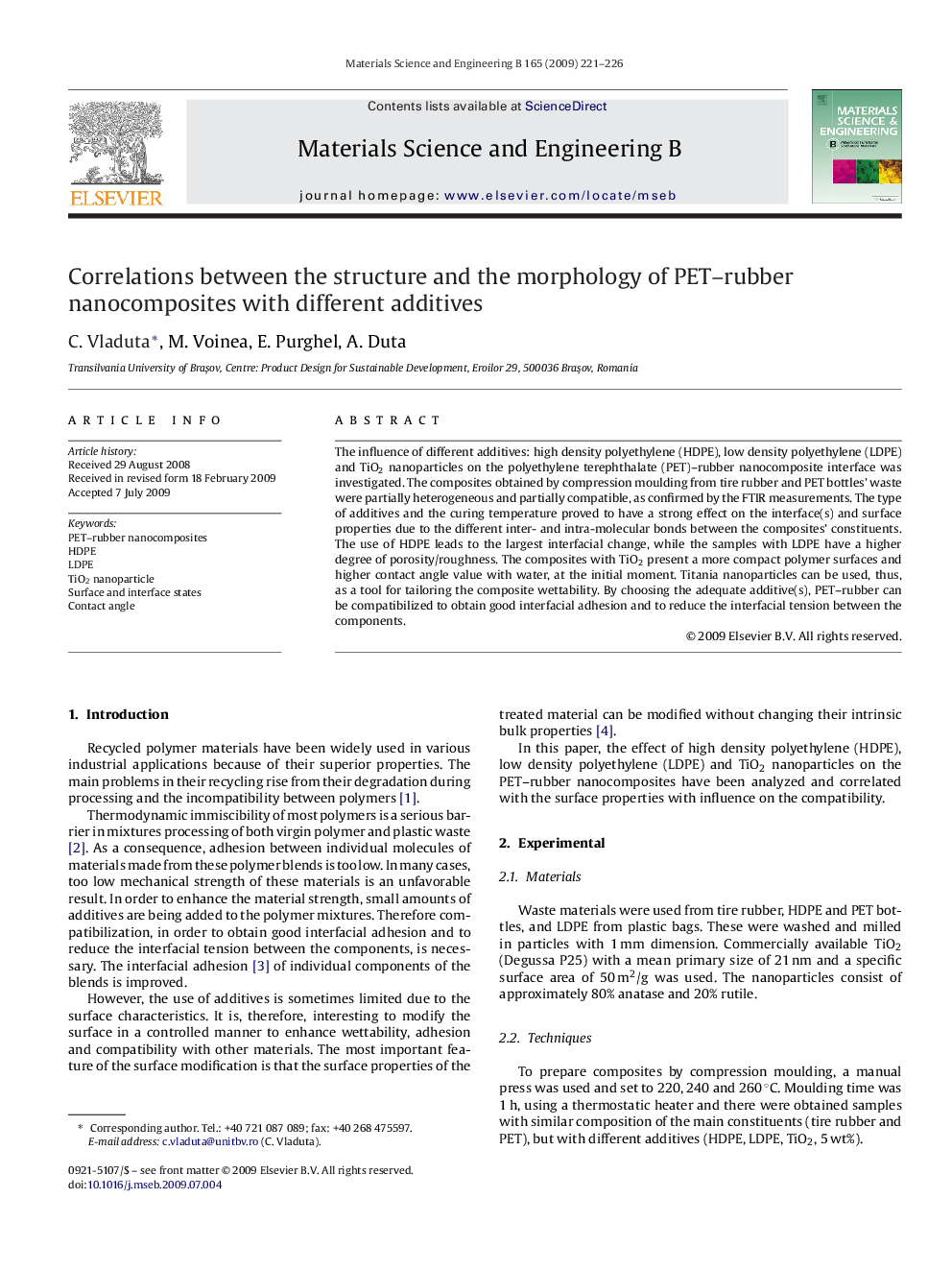| Article ID | Journal | Published Year | Pages | File Type |
|---|---|---|---|---|
| 1530260 | Materials Science and Engineering: B | 2009 | 6 Pages |
The influence of different additives: high density polyethylene (HDPE), low density polyethylene (LDPE) and TiO2 nanoparticles on the polyethylene terephthalate (PET)–rubber nanocomposite interface was investigated. The composites obtained by compression moulding from tire rubber and PET bottles’ waste were partially heterogeneous and partially compatible, as confirmed by the FTIR measurements. The type of additives and the curing temperature proved to have a strong effect on the interface(s) and surface properties due to the different inter- and intra-molecular bonds between the composites’ constituents. The use of HDPE leads to the largest interfacial change, while the samples with LDPE have a higher degree of porosity/roughness. The composites with TiO2 present a more compact polymer surfaces and higher contact angle value with water, at the initial moment. Titania nanoparticles can be used, thus, as a tool for tailoring the composite wettability. By choosing the adequate additive(s), PET–rubber can be compatibilized to obtain good interfacial adhesion and to reduce the interfacial tension between the components.
